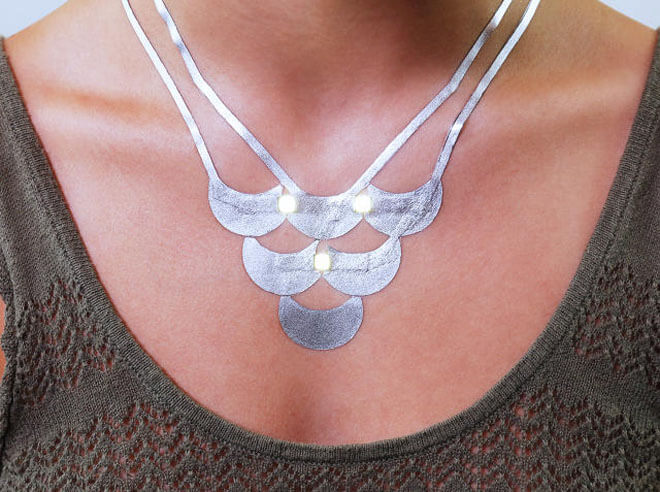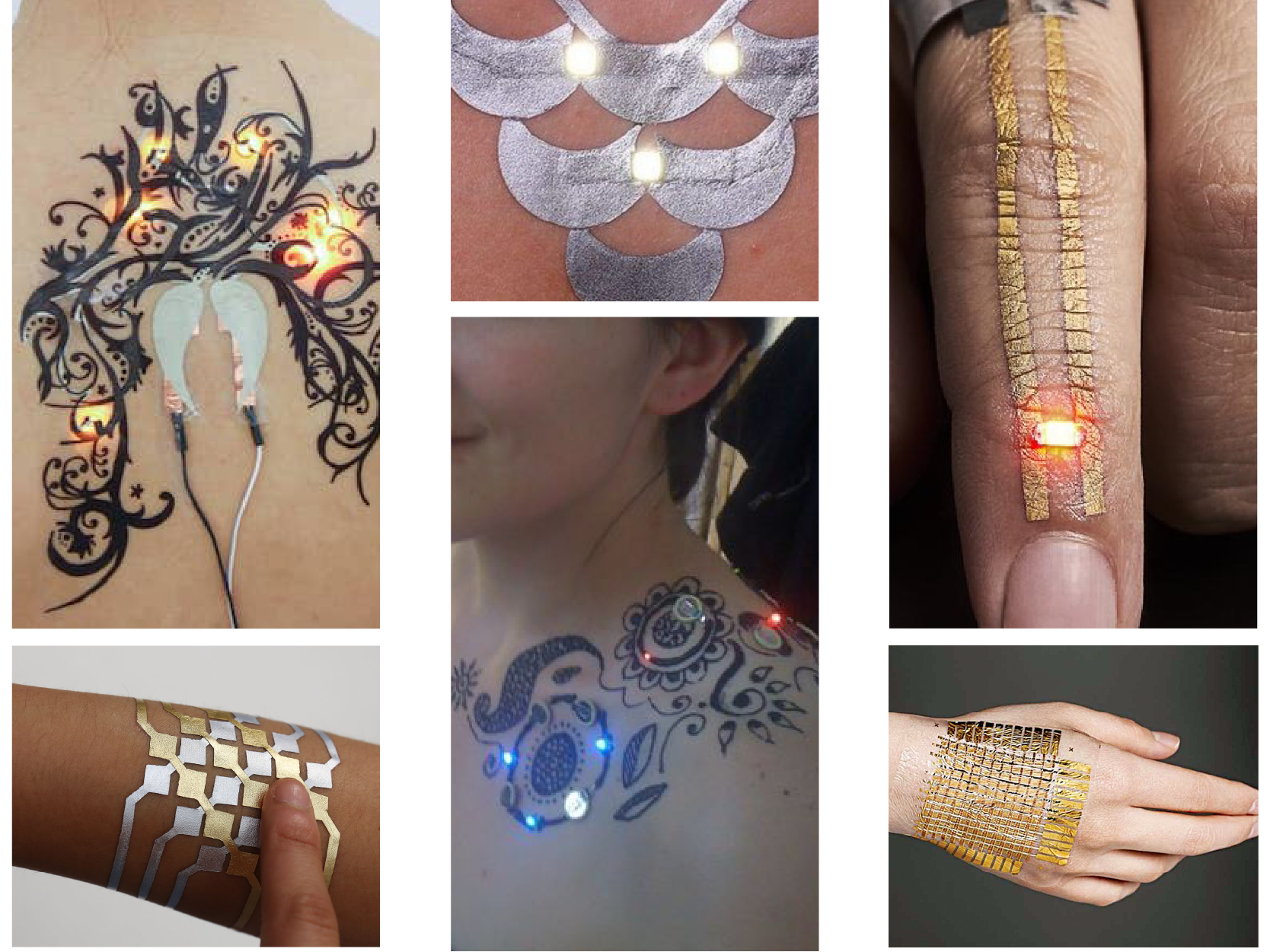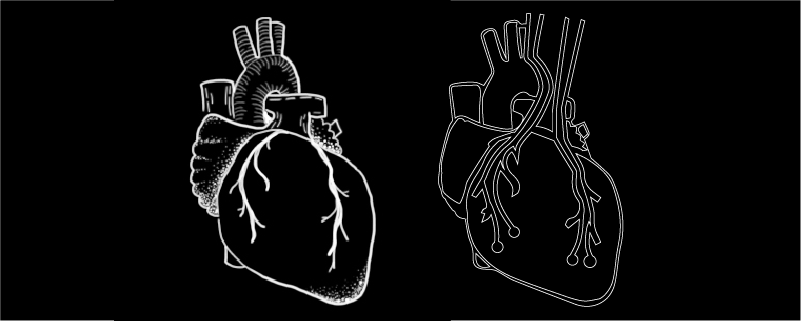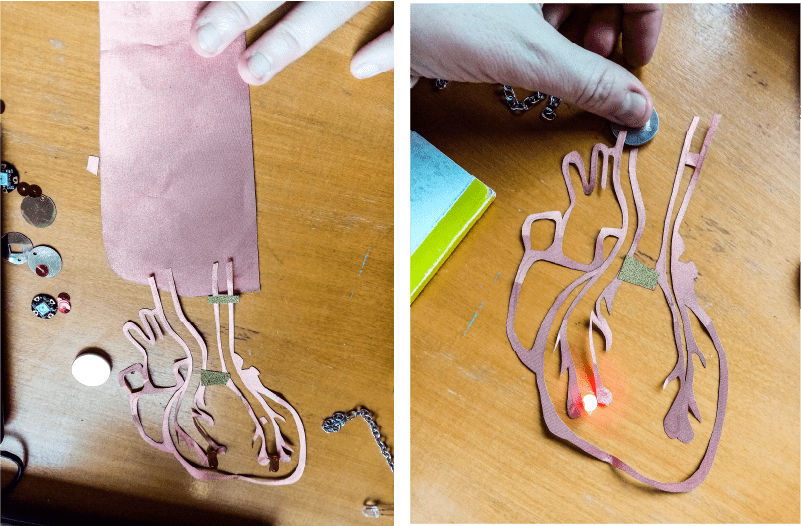13. Skin Electronics¶
Class Notes¶
December 15th, 2020 by Katia Vega
In the same way that the wearables industry is integrating fashion practices in their development, we envision new partnerships between the biotech/tech companies and skin professionals such as makeup artists, prosthesis experts and tattooists in order to embrace the idea of human-device symbiosis. FX e-makeup made use of special effects makeup for hiding electronic components that sense facial muscle movements, acting as a second skin.
Research¶
To start with this week assignment I searched for bibliography and works and projects of designer, artists and professionals related with Skin electronics.


Skintillates: Designing and Creating Epidermal Interactions from Eric Paulos on Vimeo.
Useful links¶
- Electronic skin: from flexibility to a sense of touch
- Electronic Skin: Advancements and Opportunities
- Skin electronics combine biomedical sensors with stretchable display
- Skintillates: Temporary tattoos with embedded electronics
Assignment¶
From an illustration of a human heart that I made with white pencil on black paper -which I also used to make a small animation- I scanned and digitized the design, turning the drawing into a " path" or a circuit.

Before deciding which conductive material I should use for this assignment, I did some experimentation with different materials. I tried "gold foil" , and found that it is indeed conductive, however, it is such a fragile material that I decided to use copper conductive fabric, as I have used this material before and I have more experience.

First, I attached the copper fabric to the heat-set interlining using the iron. Then, I mechanized the heart design, and cut it with the laser cutter.
The values I use for laser cutting are: Power: 15% Speed: 2000 mm/s



I added two red LEDs to the circuit, and soldered them together. I tested that it worked, and placed the piece on my body using latex.
Circuit



Files¶
The heart design file to cut the conductive path can be downloaded at this link, as well as the circuit schematic.